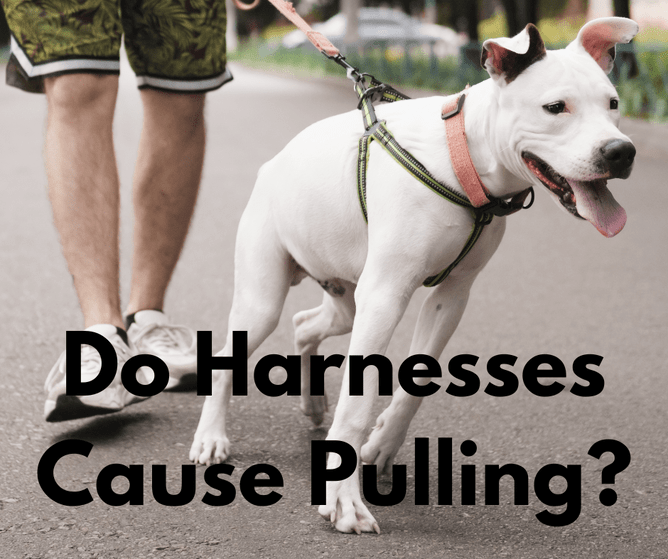Do Harnesses Cause Pulling?
The choice of walking equipment in my experience tends to be a preference for most people, or perhaps what they have always used with previous dogs.
I used to walk my dog Merlin on a check chain 25 years ago, but I always felt it was like a battle between him and I, rather than a partnership. I thought there had to be a better and kinder way.
Fast forward to a more modern approach to walking and training dogs. Now, my equipment of choice is a harness that fits the dog correctly, allows for free shoulder movement, and doesn’t rub, tighten or cause discomfort on the fur or skin.
One reason for this choice is that it keeps the dog safe from any accidental stress or strain on the neck while out walking.
It’s not hard to find recent studies that show applying pressure on the neck can carry significant risk of injury.
OK, but what about harnesses and pulling?
HARNESSES DO NOT CAUSE PULLING. They may ALLOW pulling (like any other tool), just like a car allows me to drive fast, it doesn’t CAUSE me to drive fast.
The reasons dogs pull are:
They move faster than us.
They want to get to something interesting.
They may be excited, stressed or overwhelmed.
It works – previous learning history tells them that they may get to where they want by pulling, therefore they continue to pull.
I hear you ask…. But don’t sled dogs wear harnesses and don’t you want them to pull? Yes! This is because the most ergonomic way to pull a sled is with a harness. It’s simply more efficient and comfortable to pull using a harness rather than a collar.
TRAINING and connection are the most effective ways to teach your dog to walk nicely on a lead.
Yes, even harnesses can be uncomfortable and aversive, particularly if they cut across major muscle groups or tighten when the dog pulls. Any tool we use on our dogs can cause harm if designed, used, or fitted incorrectly.
The question is, what would cause least harm?
Read more about harnesses here: https://www.pawsitiveconnection.com.au/harnesses
More info on using correctly fitted harnesses: https://www.facebook.com/100069813315815/videos/381493751536381
Visit: https://www.harbourcitydoggear.com.au/ for an extensive range of safe, secure and comfortable harnesses.

